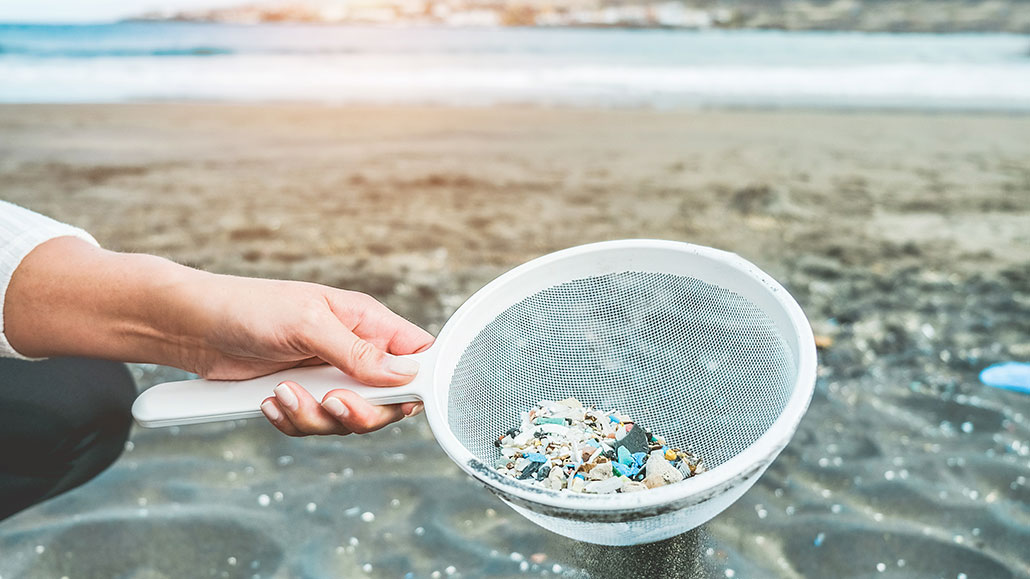Questions for ‘Microplastic pollution aids viruses and prolongs their infectivity’

Microplastic pollution can be found nearly everywhere on Earth. The plastic bits can harbor bacteria and viruses.
DisobeyArt/iStock/Getty Images Plus
Share this:
- Share via email (Opens in new window) Email
- Click to share on Facebook (Opens in new window) Facebook
- Click to share on X (Opens in new window) X
- Click to share on Pinterest (Opens in new window) Pinterest
- Click to share on Reddit (Opens in new window) Reddit
- Share to Google Classroom (Opens in new window) Google Classroom
- Click to print (Opens in new window) Print
To accompany ‘Microplastic pollution aids viruses and prolongs their infectivity’
SCIENCE
Before Reading:
- Compare the breakdown process of two pieces of ocean trash — a paper napkin vs. a plastic bottle. How will each change after drifting in seawater for one day? For one week? For one year? Which type of trash — paper or plastic— do you feel is of greater concern for our environment? Briefly explain your answer.
- What could you do to clean potential viruses off a tabletop? Describe conditions — such as temperature or surface type — that might cause viruses to break down faster, reducing the amount of time they remain infectious.
During Reading:
- What percentage of ocean trash is composed of plastic?
- Describe a biofilm.
- What is adsorption?
- What kind of life form is the T-4 phage capable of infecting?
- As a plastic bottle crumbles into progressively smaller pieces, does the amount of exposed surface increase, decrease or remain the same?
- How did the plastic used by Manfred Weidmann and his team differ from that used by Ji Lu?
- Describe one difference between the structure of the T-4 phage compared to most human viruses.
- According to Lu’s data, how many free-floating viruses out of 100 could still infect cells after 10 days?
- List the two major classes of viruses that Weidmann and his team tested. Which class is “more fragile”? Under which class does the virus that causes COVID-19 fall?
- Lu’s team compared the abilities of pollutant bits to adsorb viruses. Which adsorbed more: new plastic or old, sun-aged plastic?
- In chemistry, what are functional groups? How did functional groups differ between the new plastic and the old, sun-aged plastic?
- According to Tatiana Prado, what can governments do to address the microplastics problem? What can the public do?
After Reading:
- Choose one of the following viruses: the common cold, COVID-19 or herpes. Do an internet search about your choice. Draw your chosen virus and write its name at the top of your paper. Use your drawing to highlight three differences between your selected virus and the T-4 phage. (It may help to sketch the T-4 phage alongside your chosen virus.) Consider structural differences, such as shape, size or the different types of “body” parts. Based on your reading, do you expect one of these viruses to be more fragile than the other? Explain why or why not.
- In the ocean, oysters feed themselves by releasing gel-like substances into the surrounding seawater. This gel clumps together all the floating seawater scum. Those clumps sink. Oysters eat by then filtering those clumps out of the water. People across the world eat oysters, often raw. Based on what you’ve read in this story, what concerns might you have regarding food safety? Support your response with data from this story.